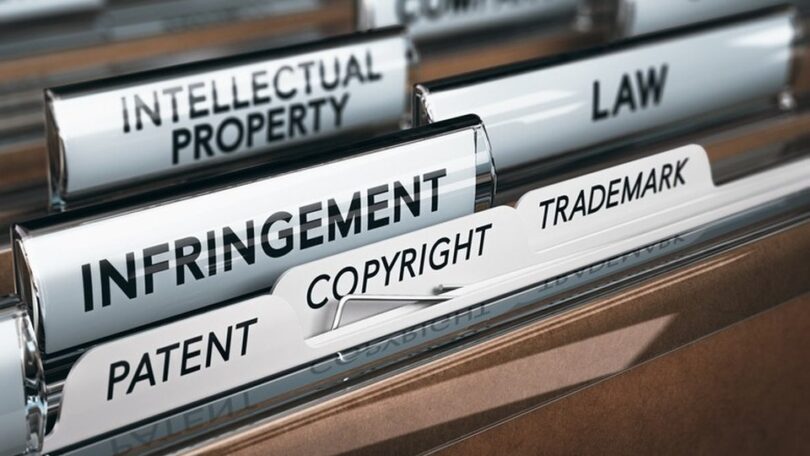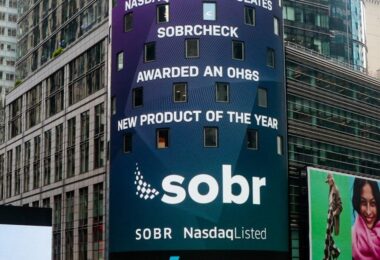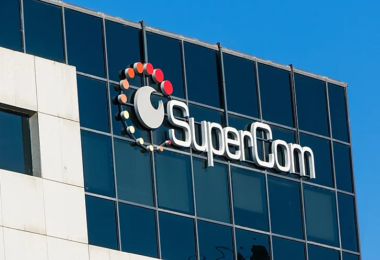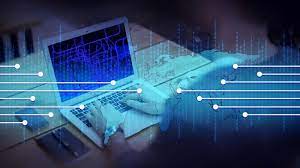A billion-dollar ruling is imminent—and almost no one on Wall Street is paying attention. Xiao-I Corporation (NASDAQ: AIXI), a little-known Chinese AI firm with a sub-$40 million market cap, is on the verge of concluding a 12-year legal war against Apple Inc. (NASDAQ: AAPL).
The charge? That Apple’s Siri voice assistant—embedded in virtually every iPhone and iPad for over a decade—was built using technology Xiao-I patented years before Apple acquired Siri.
This isn’t some flimsy patent troll case. After more than a decade of litigation, Xiao-I secured a critical win last June when the Beijing Intellectual Property Court upheld its Chinese invention patent. That decision cleared the legal path for what could be a transformative ruling. The case now sits with the Beijing High People’s Court—not to relitigate the details, but to finalize damages.
An Over 3600% Return In The Crosshairs
Xiao-I is asking for $1.4 billion. Even a partial award could send AIXI stock soaring. With just 10.55 million ADRs outstanding and a current $3.50 share price, a full payout implies a stock value of roughly $132 per share. That’s a potential 3671% return—cash backed.
And here’s something to consider: Apple has a long history of billion-dollar IP defeats. In 2012, they paid $60 million to Proview over the “iPad” trademark. Last week, a UK court ordered Apple to pay $502 million to Optis Cellular over standard-essential patents. These aren’t hypotheticals—they’re settled cases. And yet, most investors missed them. Optis isn’t public, so the opportunity passed quietly.
That’s not the case with AIXI.
This Optis case should be opening investors’ eyes. Because unlike speculative AI plays chasing hype, AIXI holds court-validated claims against one of the most valuable AI assets on the planet: Siri.
The Decade-Long Fight May Take a Bite From Apple
Xiao-I—also known as Shanghai Zhizhen Network Technology—filed its Chinese invention patent (ZL200410053749.9) in 2004 for an AI-powered voice interaction system: the Xiao-i Robot. It could recognize, interpret, and respond intelligently to human speech. Sound familiar?
In 2011, Apple released the iPhone 4S with Siri. Xiao-I claims the underlying tech resembled their patented system—too closely. Siri, notably, wasn’t Apple’s invention. It was acquired from a startup in 2010—long after Xiao-I’s patent was already granted.
That led to Xiao-I filing suit in 2012, seeking to block Siri-enabled devices from the Chinese market. Apple responded, calling for technical reviews. China’s National Intellectual Property Administration (CNIPA) obliged, reviewing the case. Unfortunately for Apple, they sided with Xiao-I. Apple appealed. It didn’t help. The Beijing Intellectual Property Court upheld the ruling, setting the stage for the Beijing High People’s Court to determine damages.
So, this isn’t a purely speculative bet anymore. Far from it. The patent has been litigated, appealed, and upheld. What’s left is math.
$1.4 Billion vs. $37 Million
Let’s break it down. Xiao-I has just 10.55 million shares outstanding. That means:
- A $250 million award = ~$25/share
- A $1 billion award = ~$95/share
- A $1.4 billion award = ~$132/share
At a current market cap near $37 million, even a fraction of that award could be a life-changing investment return for many on the retail side. This is the classic patent-play setup: suppressed valuation, prior legal victory, and a trigger that could reprice the stock exponentially in minutes.
In short, no, this isn’t a pure patent play.
Legal History Favors Xiao-I
If it were, it’s good knowing that Apple losing patent battles is nothing new. The Proview case. The Optis judgment. Both involve significant payout orders. Of course, Apple appeals—but in the latter, it will likely pay up anyway. Under UK law, appeals to the Supreme Court require permission from the Court of Appeal, which rarely grants them. In other words, even Apple can’t litigate forever.
Which brings us back to Xiao-I. Unlike Proview or Optis, AIXI is a public company—giving investors a direct avenue to capitalize on Apple’s IP liabilities. On that note, it’s imperative to remember that the Chinese courts are not revisiting the patent. That’s done. Also, China courts generally allow one appeal, which Apple may have already burnt. What’s left is a dollar figure. And if that figure comes in anywhere near $1.4 billion, Xiao-I’s valuation likely gets a material upgrade along with a hefty premium assuming licensing potential.
Know this too: A ruling in Xiao-I’s favor doesn’t just hit Apple’s balance sheet—it potentially sends shockwaves through the AI ecosystem. Siri’s core functionality has been deeply embedded across devices, platforms, and services. A court-backed win could give Xiao-I license leverage far beyond Apple—from OEMs to enterprise vendors who’ve used similar technologies without proper clearance.
The knock-on effect? More settlements, more licensing, and more investor upside.
That’s the disconnect. That’s the opportunity. And based on recent volume and volatility, it’s put AIXI in play. But with the Beijing High People’s Court aiming to publish rulings—no matter how complex—within six months of final arguments, consider taking advantage of a $3.50 price tag sooner than later. After all, with six months now past since litigation ended, the final gavel drop is imminent.
Disclosure: The information contained on this article is not and should not be construed as investment advice, and does not purport to be and does not express any opinion as to the price at which the securities of any company may trade at any time. The information and opinions provided herein should not be taken as specific advice on the merits of any investment decision. Investors should make their own decisions regarding the prospects of any company discussed herein based on such investors’ own review of publicly available information and should not rely on the information contained herein. The information contained in this article has been prepared based on publicly available information and proprietary research. The author does not guarantee the accuracy or completeness of the information provided in this document. All statements and expressions herein are the sole opinion of the author and are subject to change without notice.Any projections, market outlooks or estimates herein are forward-looking statements and are based upon certain assumptions and should not be construed to be indicative of the actual events that will occur. Other events that were not taken into account may occur and may significantly affect the returns or performance of the securities discussed herein. Except where otherwise indicated, the information provided herein is based on matters as they exist as of the date of preparation and not as of any future date, and the author undertakes no obligation to correct, update or revise the information in this document or to otherwise provide any additional materials.The author, the author’s affiliates, and clients of the author’s affiliates may currently have long or short positions in the securities of certain of the companies mentioned herein, or may have such a position in the future (and therefore may profit from fluctuations in the trading price of the securities). To the extent such persons do have such positions, there is no guarantee that such persons will maintain such positions.







